Sakura and the Spirit of France: “LIGHTS OF FRANCE” Exhibition Illuminates Oji This Weekend 29 Mar 7:40 AM (8 days ago)
Sakura and the Spirit of France: “LIGHTS OF FRANCE” Exhibition Illuminates Oji This Weekend
As Tokyo’s cherry blossoms reach their peak, the historic district of Ōji in Kita-ku offers more than just floral beauty this weekend. Nestled among the blooming sakura trees, a rare and intimate art exhibition titled “LIGHTS OF FRANCE”invites visitors to step into a hidden corner of postwar European art history.
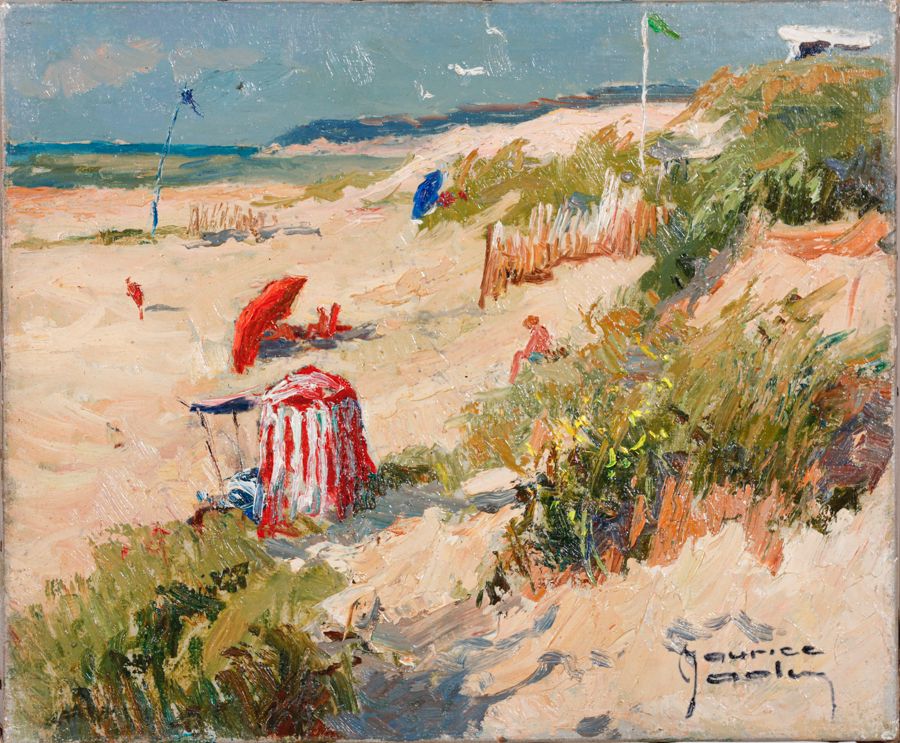
Running from March 22 to March 31, 2025, the exhibition is presented by Ikono Art Collection and showcases a remarkable selection of works from the private collection of French artist Marcestel (Marc Antoine Squarciafichi). Hosted in the cozy back room of Le Chien Noir, a charming café-gallery space located within Red Tanpopo in Ōji, the show offers a unique cultural experience where art and ambiance converge.

The exhibition features 28 original works, along with lithographs and limited-edition prints, by a group of celebrated French painters—many of whom were central figures in the Paris School during the 1960s to 1980s. Among the featured artists are Yves Brayer, Jean Lurçat, James McAvoy, Jean Larrieu, Jean-Pierre Journod, Claude Genis, Jean Gantner, Jacques Masson, and Jacques-Henri Lartigue. These artists, known for their lyrical interpretations of French life, landscapes, and light, bring a vibrant European sensibility to the heart of Tokyo.
What makes this exhibition particularly special is that these works—kept in private hands for over three decades—are being unveiled to the public for the first time in more than 30 years. Even more unusually, they are available for purchase before returning to France, offering collectors and art lovers a rare opportunity to acquire pieces of European art history.
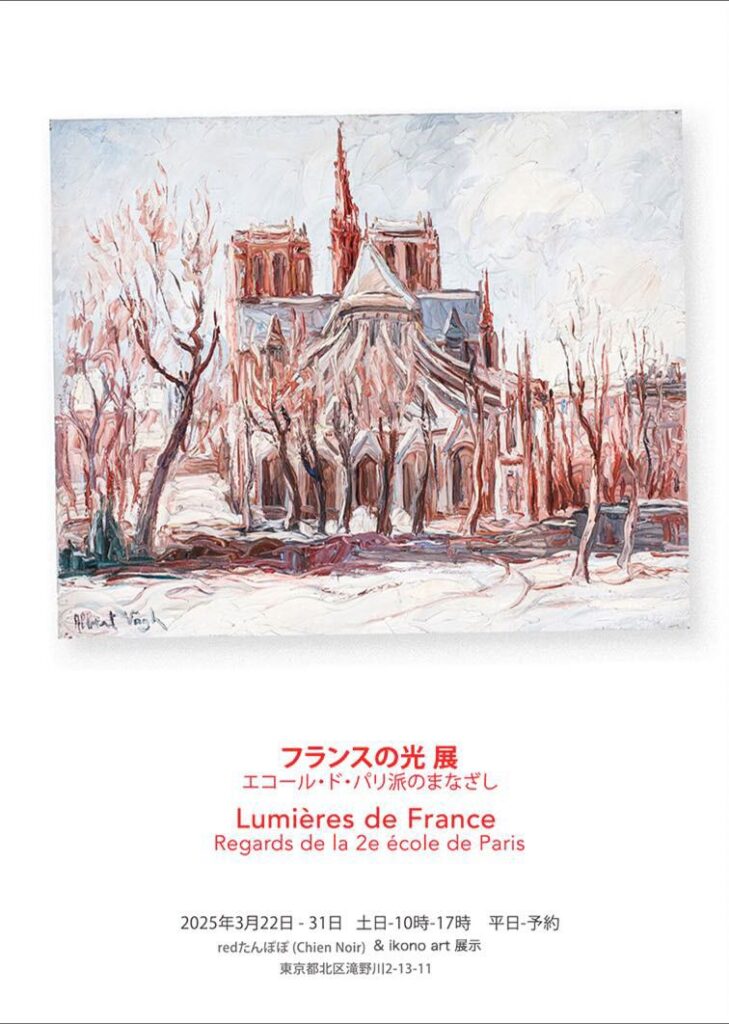
The exhibition is free to the public and is open daily until March 31st, making it a perfect cultural stop during a hanami stroll through Ōji’s parks and riverside paths.
Exhibition Details Red Tanpopo / Le Chien Noir
Red Tanpopo / Le Chien Noir
2-13-11 Takinogawa, Kita-ku, Tokyo March 22 – 31, 2025
March 22 – 31, 2025 Admission: Free
Admission: Free
Whether you’re an art connoisseur, a curious traveler, or simply in the neighborhood to enjoy the cherry blossoms, “LIGHTS OF FRANCE” offers a rare and intimate encounter with the golden glow of French modernism—right here in Tokyo.
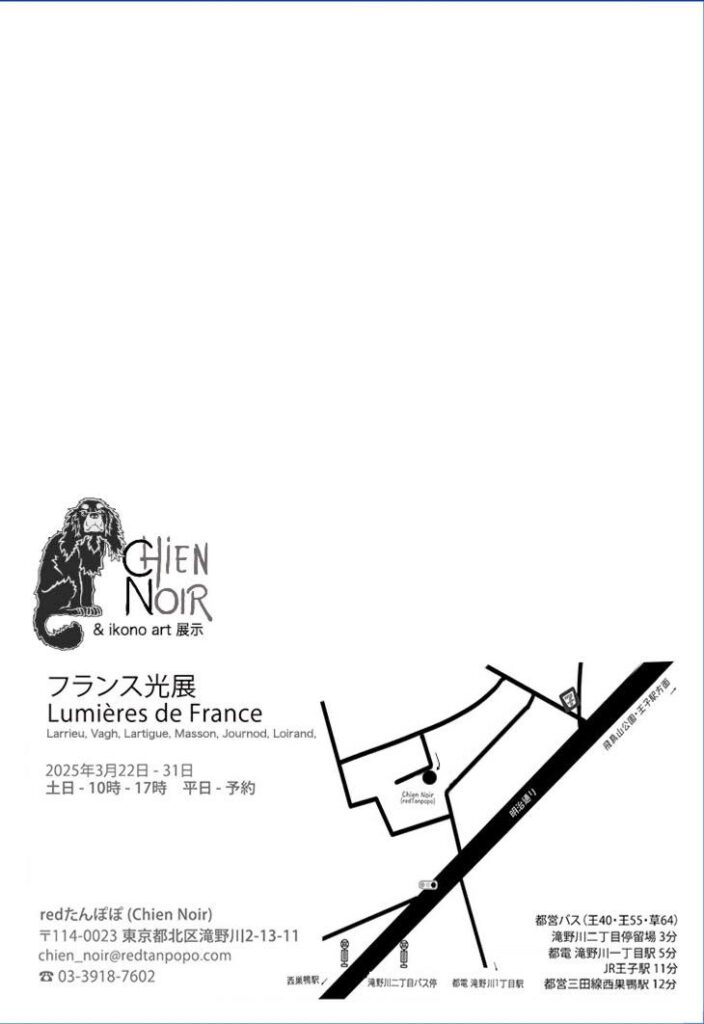
Pedaling Through Paradise 5 Mar 2:00 AM (last month)
Cycling the Shimanami Kaido: A Sporty Journey Through the Seto Islands
By Salomé Le Corre
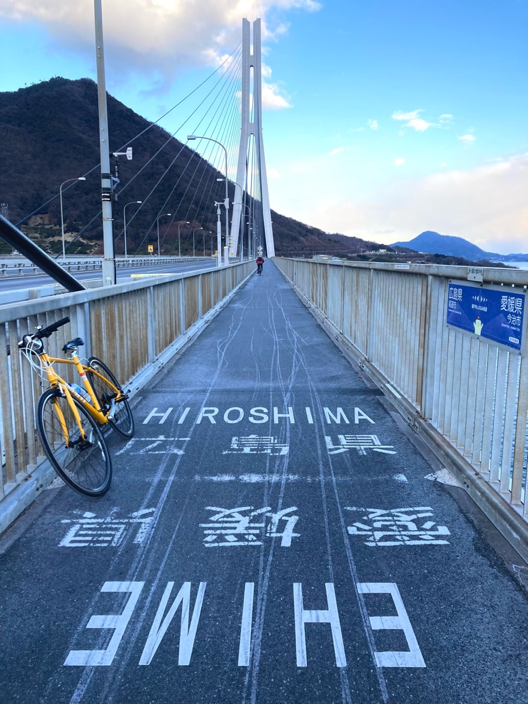
Pedaling Through Paradise
There’s something invigorating about the crisp sea air in winter—especially when you’re experiencing it from the saddle of a bike, weaving through the islands of the Seto Inland Sea. And what better way to do it than by cycling the famed Shimanami Kaido?
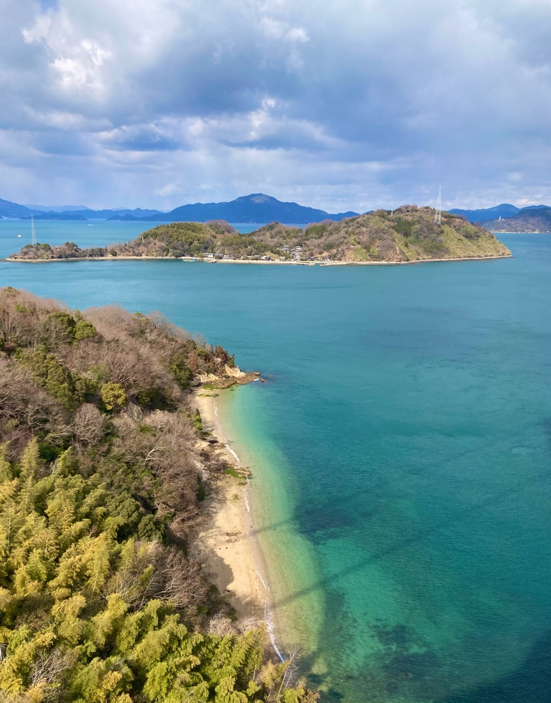
A Winter Ride on Japan’s Scenic Cycling Route
In early February, we take on the challenge of cycling the Shimanami Kaido, a 70-kilometer stretch beloved by cyclists across Japan. The route links Onomichi in Hiroshima Prefecture to Imabari in Ehime Prefecture, crossing six majestic bridges and revealing an ever-changing panorama of rural islands—Ōshima, Hakatajima, Ōhmishima, Ikuchijima, Innoshima, and Mukaishima. Reserved exclusively for pedestrians and cyclists, it’s an unspoiled haven for those who love the open road.
Our journey begins at the bike rental station in Imabari, where a range of bicycles—city bikes, mountain bikes, and electric-assisted options—are available. Rentals are flexible, allowing for drop-offs at designated terminals along the route. After a quick orientation, we push off toward the first suspension bridge, Kurushima-Kaikyō. The incline is noticeable, a small test of endurance, but the reward is immediate: sweeping views of the tranquil inland sea. As we follow the well-paved, mostly flat path, signs mark the distance to both Onomichi and Imabari, keeping us motivated.
Stopover on Ikuchijima: The Lemon Island
While the entire route can be conquered in a day, we opt to savor the journey with a stopover on Ikuchijima, known as “Lemon Island” for its famed citrus groves. After nearly 40 kilometers battling the winter headwind, we cross into Hiroshima Prefecture via the Tatara Bridge, just as the first snowflakes begin to fall. The contrast between the subtropical island landscape and the gentle snowfall feels almost surreal.
Setoda, the heart of the island, is a quiet retreat with fewer than 9,000 residents. Here, we explore the Kojoji Temple’s Three-Story Pagoda, a national treasure nestled in Choozan Park with a commanding view of the Setoda harbor. Nearby, the Kosanji Temple Museum beckons with its striking blend of architectural influences from Japan’s Asuka, Nara, Kamakura, and Edo periods.

Traditional craft shops and citrus-themed delicacies line the streets. Lemon-infused cookies, syrups, juices, salt, and even pasta entice us, and friendly shopkeepers offer samples. The off-season has its perks—fewer tourists, more personal interactions, and an unhurried pace to soak in the island’s charm.
The Ride Back: Art, Sunsets, and a Satisfying End
As we bid farewell to Setoda’s warm hospitality, we pedal toward the rental terminal at Setoda Sunset Beach. The scenery is nothing short of breathtaking—the sky is awash in late afternoon hues, and citrus orchards sway gently in the evening breeze. Along the way, we pass some of the 17 outdoor sculptures of the Island-Wide Art Museum, transforming the island into an open-air gallery.
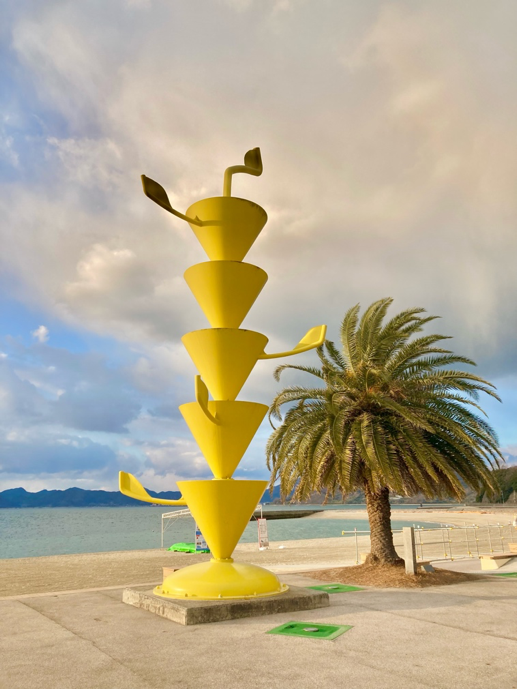
For the adventurous, the journey can continue to Honshu’s mainland via Onomichi. Ferries offer another way to explore the surrounding islands, but for us, it’s time to head back by bus, our legs weary but our spirits full. Fifty kilometers of cycling later, we leave with memories of an island-hopping adventure where every turn of the wheel revealed a new slice of Japan’s natural beauty.
Art and DEI Get Cozy at the agnès b. Gallery in Aoyama” 3 Mar 6:35 PM (last month)
These are weird times when everyday, the news brings yet another series of incredulous, synapse-shredding headlines. One can’t be so naive as to believe that art will step in and save the world. Yet, at a time when no one and nothing is proffering a magic pill, at least art acts as a biggish band aid to cover the gaping wound. In that spirit, stroll over to the agnès b gallery boutique in Aoyama, Tokyo. From late February until March 23rd, an exhibition called Watashitachino Henji 1975-2025 is on display, showcasing the works of three artists and one performance group, and if you’ll forgive the triteness of the expression, it’s a sight for sore eyes.
Watashitachino Henji translates to ‘our response,’ and pertains to a short film made in 1975 by French auteur Agnès Varda. Titled Reponse des Femmes: Notre Corps, notre sexe (international title: Women Reply), this 8-minute ‘cine-essay’ sent ripples of shock through French society for the raw honesty of its theme and the frankness of the women who appear in front of Varda’s camera to answer questions about how they view their bodies and their sexuality. Through her film, Varda ponders what it means to be a woman in the heavily conservative and bourgeois French society of the 1970s.
Half a century later, the artists in Watashitachino... respond to Varda’s film by pondering their own identities. But while Varda had grappled with women’s femininity as a major art theme, Watashitachino… brings a broader perspective to womanhood. Akemi Kouda-Riveau helmer and curator of the agnes b. gallery boutique, says: “At first, we had thought of replicating the title of Varda’s film by calling this exhibition Women’s Reply. Because we felt that 50 years on, not much had changed in society when it comes to women’s rights and gender equality. But upon closer inspection, we discovered that wasn’t true. There was evidence that gave rise to hope and we felt that the exhibition merited a more inclusive and optimistic title.”
Kouda-Riveau adds that the gallery also preferred not to “unconsciously alienate” men who would otherwise be interested in seeing the exhibition, or putting a gender bias on any of the work. In 1975, Varda had gathered the voices and images of women as an emotionally-charged response toward an abusive and controlling, male dominated society. But now, says Kouda-Riveau, discrimination and inequality is “everyone’s problem, and one that we all need to think about.”
The exhibition is heavily autobiographical, focussing on individual bodies and experiences while addressing the universal themes of identity and belonging.
Artist Mari Katayama was born with a bone disease that deprived the use of both legs and a two-fingered left hand. She is known for her self-portrait photos featuring her prosthetic limbs, decorated with her own intricate embroidery and handwork. In the exhibition, Katayama departs from her earlier, girlish and fantastical world to a bolder, more modern expressive form. Her main self-portrait shows her standing, supported by prosthetics that seem minimal compared to the more theatrical prosthetics of her past self-portraits. In the other photos she has no prosthetics at all, and supports herself on a chair. Katayama’s body has never seemed so quietly triumphant or strong, to the point that her physical disability becomes a non-issue.
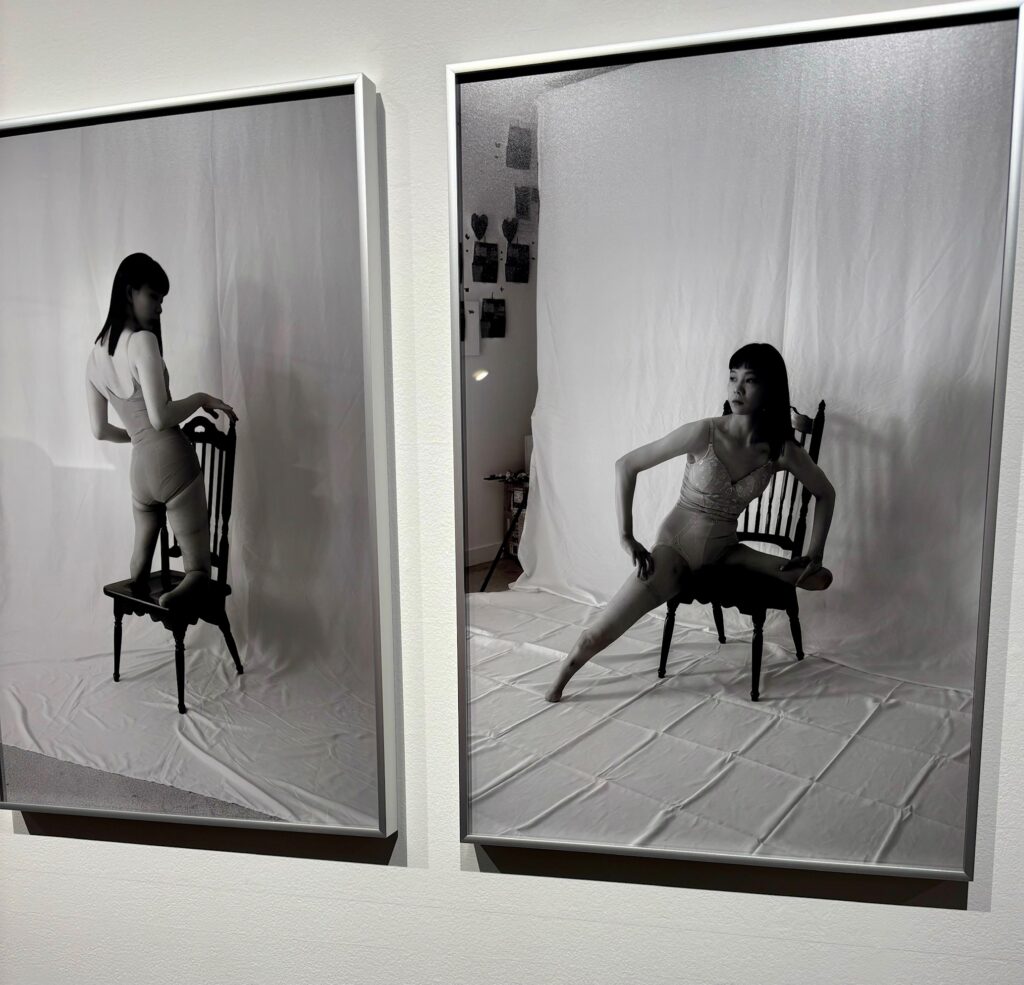
Ana Scripcariu-Ochiai is Romanian Japanese mixed media artist. For the exhibition, Scripcariu-Ochiai put together a video and photos entitled “One Who Weaves the Light.” Her theme is displacement, escape and finding a place to call home. Through her art work, Scripcariu-Ochiai loosely tells the tale of three Romanian women artists – the first is a weaver of carpets who could not leave her country or even her village where she worked. The second is a Japanese photographer who visited Romania after the fall of the Berlin Wall and documented the life she found there. The third is the photographer’s daughter, who lives in the chasm between the twin worlds of Japan and Romania, and uses the chasm as a means of artistic expression.
Erika Kobayashi is an author, illustrator and manga artist who has worked in a wide range of fields including an AC Japan ad campaign entitled ‘I didn’t even know I has a choice,’ depicting the plight of young girls around the world who are forced into child prostitution or marriages. For this exhibition, Kobayashi assembled words, a video and a photograph of a woman’s hand with what appears to be blood dripping on it. Kobayashi’s words recount how she had her first period at the age of 13 and went through the menstrual cycle until, just before she turned 40, a uterine disease terminated that cycle. “Now I don’t see my own blood anymore. But in the news, people are bleeding – men, women, children, and people who don’t fall into any of those categories – they are all bleeding. But I never see my own blood anymore.”
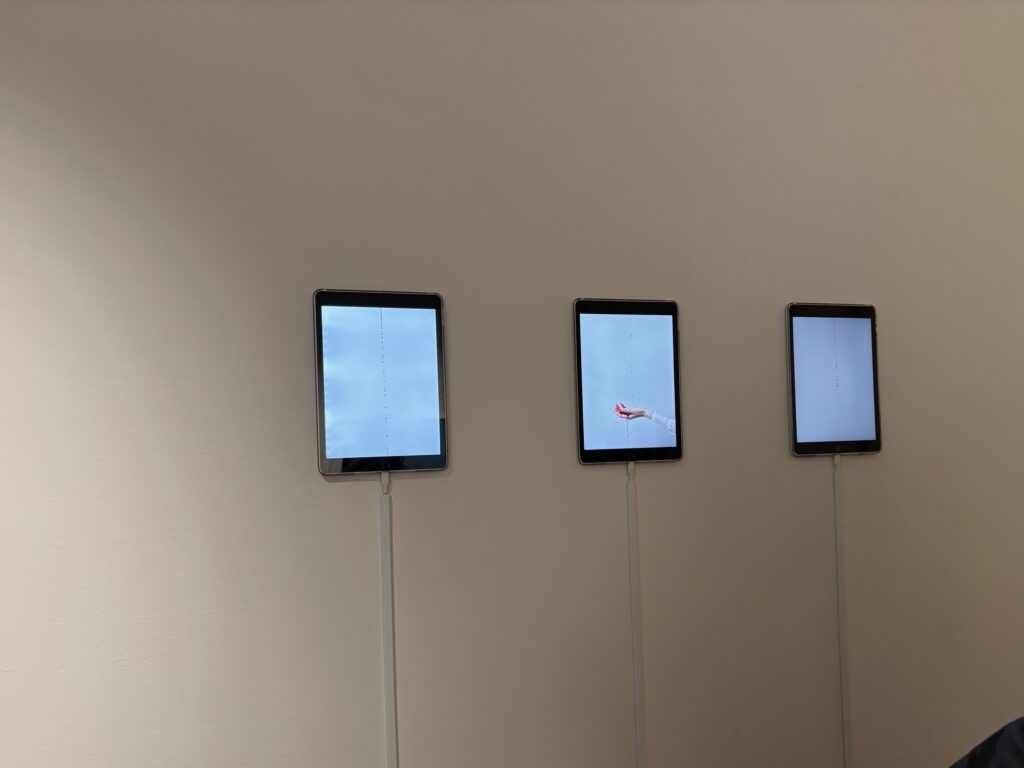
The performance artist group Tokyo QQQxEBIZAZEN put on what they call a “life-as-you-live-it” performance. A nine-member group who defies gender and conventional ideas of normalcy., they challenged the spectators to “revel in the extraordinary” by witnessing their bodies. Some were trans, others were cisgender. One man was in a wheelchair and a woman was about 3 feet high. They were all celebratory and self-deprecating of themselves at the same time. Ultimately, they were there to tell their own stories. A prominent member of the group was Aoi Yamada, who is now the Japanese art critic’s darling. Yamada had a role in Wim Wenders’ Perfect Days (2023) and she’s also one of the fashion muses for the agnès b. clothing brand.
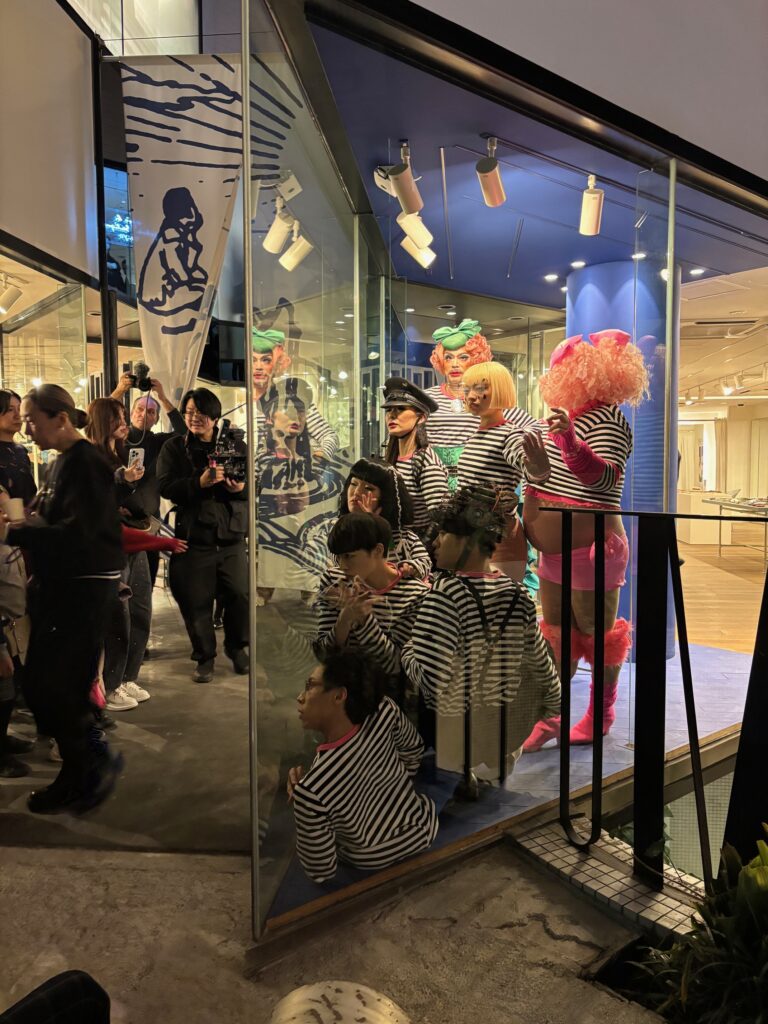
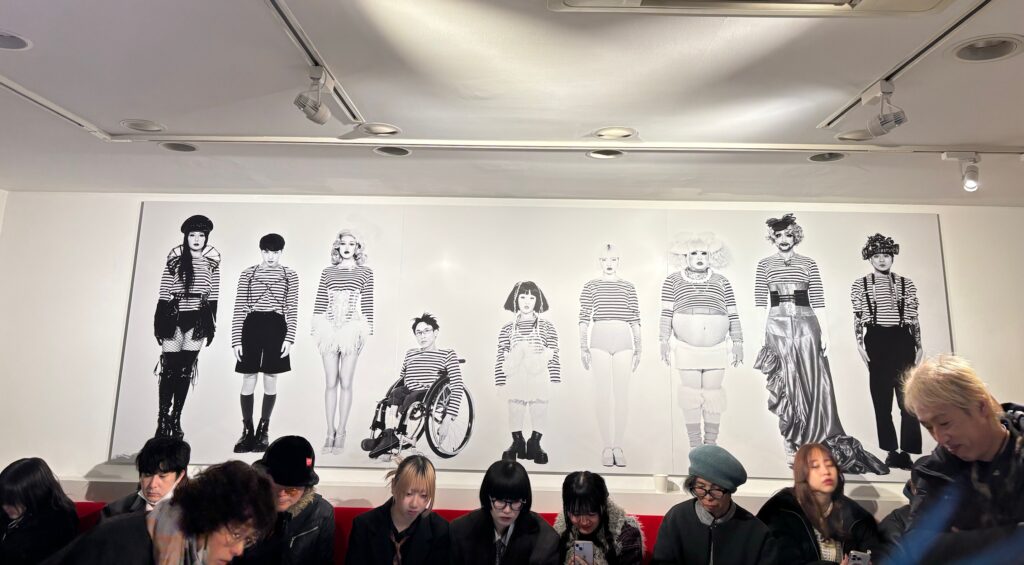
Speaking of which, this year marks the 42nd anniversary of Parisian designer Agnès Troublé in Japan. Troublé herself used to be a leftist activist, who marched in rallies in Paris with her twin babies strapped to her body. Her brand agnès b has an enduring fan base in Japan, with the most number of outlets in the world. The exhibition on the second floor of the agnès b. building meshes perfectly with the aesthetics of the clothing on display downstairs so it would be wise to stroll through all the floors.
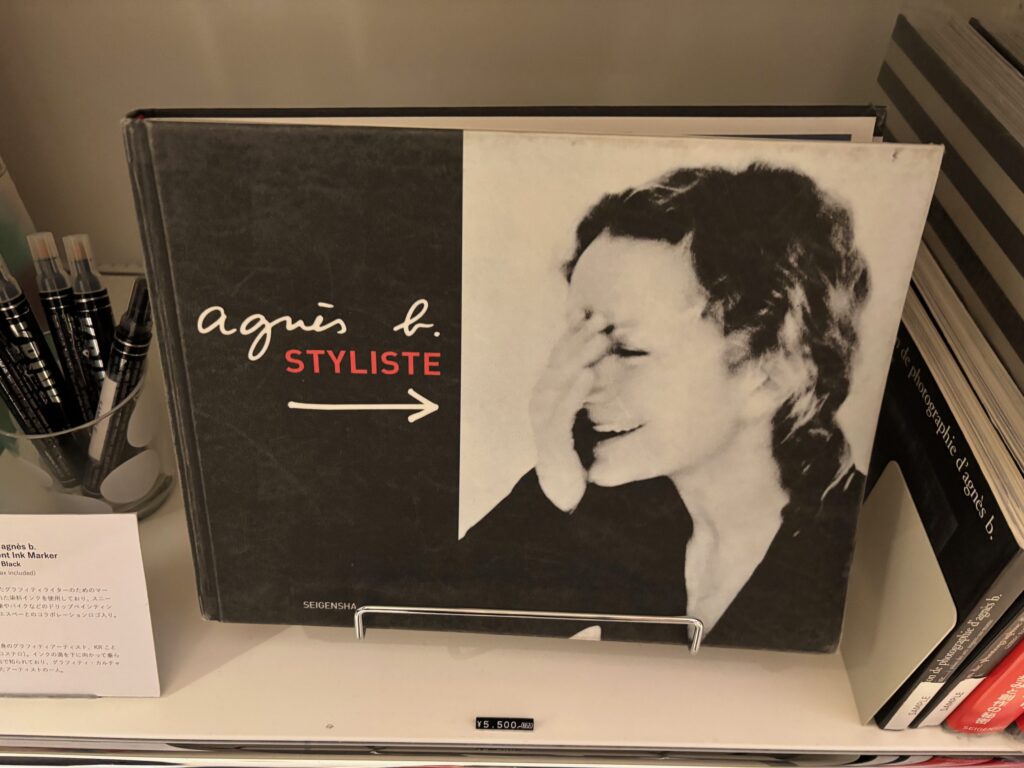
All photos by Kaori Shoji
The Documentary Black Box Diaries and Marriot International: Who’s Actually Protesting? 19 Feb 3:51 AM (last month)
The documentary Black Box Diaries has taken the world by storm. It is the story of journalist Shiori Ito, who directed the film. In 2015, the young journalist was raped by Noriyuki Yamaguchi, a powerful media figure with close ties to then-Prime Minister Shinzo Abe. Even more disturbing was how the police had initially pursued the case, obtaining an arrest warrant for Yamaguchi, only to have the arrest suddenly quashed by a high-ranking government official. Then a political lackey of the Prime Minister scuttled the case, and the prosecutors dropped the ball. It was a blatant example of political interference in law enforcement, the kind of cover-up that reeked of abuse of power.

The documentary which uses footage from the hotel, recordings from eyewitnesses and other materials to tell the story, has been met with widespread critical acclaim and has even received nominations at the Oscars and BAFTAs.
But in filmmaker Shiori Ito’s home country of Japan, the film is facing yet another uphill battle.
Domestic press coverage could easily be about the merits of the film or consternation that the film has yet to be released in Japan. Coverage could, and should, also include the injustices in Shiori Ito’s life since 2015 when she was raped by Shinzo Abe’s personal biographer Noriyuki Yamaguchi. Civil courts determined Yamaguchi was a rapist, but the criminal investigation was curiously dropped moments before his arrest. Our editor in chief previously posted an explainer on this story, which is worth a read if you’d like more context.
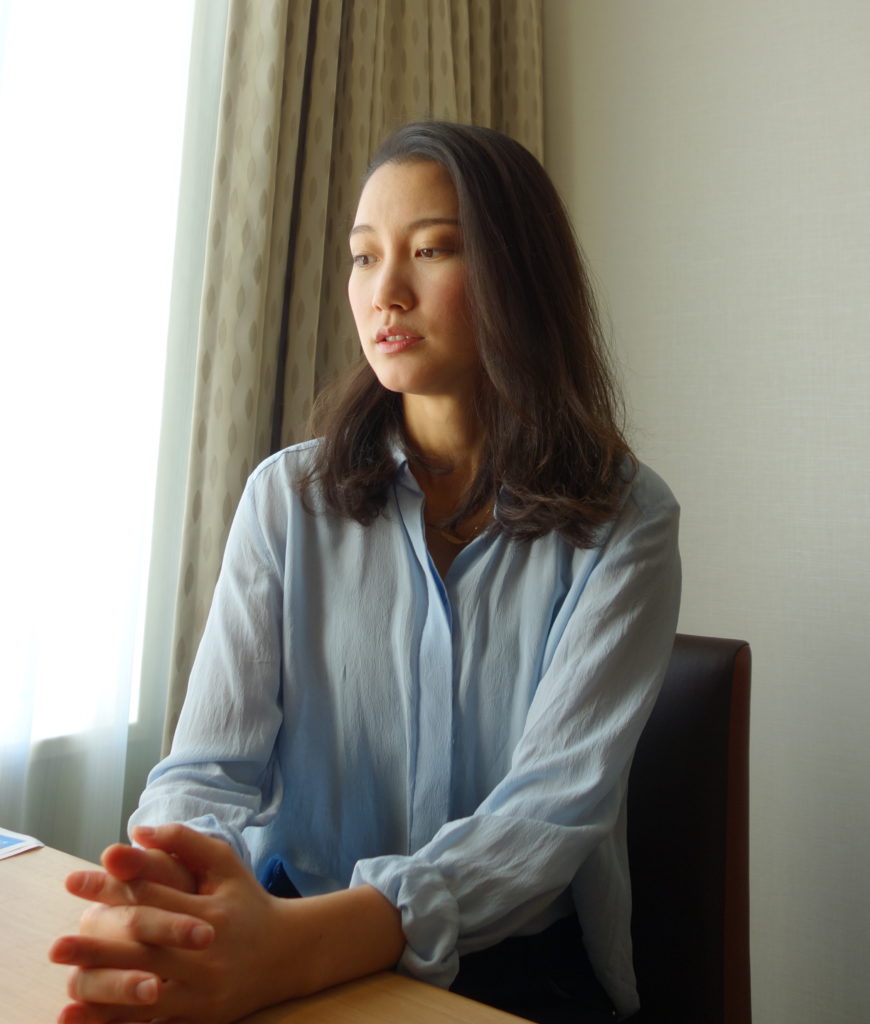
Instead, the film is currently embroiled in a different kind of national discussion — a hair-splitting spat about how journalists are allowed to use video and audio footage, initiated by Ito’s former legal representatives.
The video footage in question is a CCTV recording obtained from the Sheraton Miyako Hotel Tokyo. The clip used in the documentary is a disturbing sequence of Ito’s limp body being dragged out of a taxi by Yamaguchi, everything in frame blurred except Ito herself.
The hotel first disclosed this footage to Ito and accompanying investigating detectives on April 15, 2015. While the police acquired the footage as evidence, Ito made a separate inquiry to get the footage herself after this initial visit. The hotel should be commended for fully cooperating with the police investigation.
Ito’s former lawyer and representatives take issue with the fact that she didn’t get permission from the hotel to use this footage outside of the courtroom. The hotel has been owned by hotel conglomerate Marriott International since 2016, after the incident occurred.
“The use of unauthorised images and sounds is legally and ethically problematic,” insists Yoko Nishihiro, Ito’s former counsel.
It is true that Ito and her legal team at the time had a written agreement to use the footage in the courtroom exclusively. However, we reached out to Marriott International, and they have refused to oppose or endorse the use of this footage in the documentary. We appreciate their efforts to respond to our question.
The following is a complete summary of our correspondences.
Unauthorized footage leakage:
Q: Many commend the hotel’s cooperation in assisting Shiori Ito during her case. However, there is confusion regarding the leak of footage showing her leaving the hotel appearing untroubled. Do you have any information on how this footage was released?
A: Marriott International has been made aware of this incident. The incident occurred at a hotel operated by a third party franchisee under a brand, which at the time of the incident was not yet under Marriott International’s portfolio of brands, as the incident occurred prior to Marriott International’s acquisition of the brand relating to this hotel.
Q. There is confusion regarding the leak of footage showing her leaving the hotel appearing untroubled. Do you have any information on how this footage was released?
A: No answer
Position on the Film’s Release in Japan:
Q: Are you opposed to the release of “Black Box Diaries” in Japan? If so, could you please explain your reasons?
A: No answer
Policy on Reporting Sexual Assaults:
Q: If an incident of sexual assault were to occur on Marriott premises, would your hotel share that information with the police? Could you elaborate on your protocol for handling such situations?
A: Marriott International is fully committed to the safety and well-being of our guests. We are committed to complying with all local laws and strive to maintaining the highest ethical standards. When we are made aware of reported incidents, we will work closely with the local authorities to facilitate any investigation to the extent permitted under laws, including providing information required by laws.
Q: Are you opposed to the release of the film in Japan? If so or if not, why? This could be due to the footage, the subject material, the persons involved, or other reasons which you may be able to explain.
A: No answer
Q: Finally, is it correct that Marriott International acquired the brand to which the Sheraton Miyako Hotel Tokyo belongs in 2016?
A:Thank you for the additional question. Yes, Marriott International acquired the Sheraton brand in 2016.
Marriott subsidiary Sheraton Miyako, the brand directly operating the Sheraton Miyako Hotel Tokyo, has yet to comment. These are all the answers we have as of 10pm February 19th 2025 (JST)>
The hotel has set a precedent of not addressing unauthorized use of footage. In particular, the hotel did not take action regarding the leak of CCTV footage showing Ito leaving the hotel the next morning, which was widely circulated years prior with the intention to discredit and libel Ito. In short: they seem to not care. They also have the power recognise that the use of the film is in the public interest. According to the producers of the film, the hotel chain was notified and shown how the footage was used in the documentary before it was released.
It is unusual for the victim’s former counsel to be raising these concerns rather than the parties supposedly affected.
Nishihiro argues that unauthorized use of footage could lead to businesses being more reluctant to cooperate with investigations, causing future harm to future victims. I
t’s hard to imagine how much more uncooperative they could be. The hotel reportedly provided the footage to Ito for use in her court case at a whopping fee of 400,000 yen ($3000). Holding this video evidence ransom is akin to price gouging for a victim of a violent crime, company policy or not.
It is difficult to say for certain whether such unauthorized use could affect future relationships between establishments and victims of crimes on their premises. It’s questionable now as to whether you can even call it “unauthorized” at this point. In some senses, in line with their policies, they same have given the use of the footage tacit approval. But it is questionable that businesses already profit from the evidence they hold, even taking into account the high privacy standards in Japan. It’s yet another mechanism that protects assailants, not victims.
Ex-Japanese Lawmaker Found Guilty Of Sexually Assaulting Pre-Teen – and Walks 3 Feb 3:00 PM (2 months ago)
This article was originally posted on tokyopaladin.substack.com. Subscribe for exclusive posts, right to your inbox.
Tokyo – The system takes care of its own.

A former member of Japan’s House of Representatives, 58-year-old Tamotsu Shiiki, walked out of a Tokyo courtroom Monday with a three-year prison sentence, suspended for five years, for sexually assaulting a 12-year-old middle school girl in a Kabukicho karaoke parlor. Kabukicho is the red-light district of Tokyo. The ruling ensures that, barring another conviction, he will never see the inside of a cell.
Tokyo District Court Judge Chikako Murata called the crime “vile” and condemned Shiiki for “preying on the vulnerability of a child”, whose “immaturity” he had exploited. But in the next breath, the court extended its mercy. Shiiki had apologized. He had paid his compensation. And, critically, he had not explicitly used his position as a former lawmaker—only the quiet authority and confidence that men like him are granted as a birthright.
Prosecutors had sought five years. They got nothing.
A Crime in the Heart of Tokyo’s Nightlife District
According to the indictment, on August 20, 2024, in the neon-lit sprawl ofKabukicho, Shiiki took the girl to a karaoke parlor and assaulted her. He had nothing to say in court. He had already admitted to the charges.
By any measure, the facts were not in dispute. The court noted that Shiiki’s motive was pure self-interest—his own sexual gratification. The crime was “despicable and malicious,” but the sentence reflected the familiar calculus of Japanese justice, where men of standing rarely serve time unless their guilt is both undeniable and inconvenient.
A Political Career Unraveled
Once a rising politician, Shiiki was first elected to the Lower House in 2012, under the banner of the Japan Restoration Party. He clawed his way in through “proportional representation”, serving two terms before falling from political grace.
Now, he joins a growing list of disgraced public figures who have found a way to survive scandal—not in elected office, but in the margins, where apologies and settlements stand in for justice.
Shiiki left the courthouse a “convicted sex offender”, but a free man. That, too, is part of the system. Japan doesn’t have a sex offenders registry so he is free to go and live where he wants, do what he wants, and if he can stay clean for five years, it will be as if nothing ever happened.
The courts consider a guilty plea accompanied by the payment of “compensation” to the victims to be a sign of remorse, and are likely to award a suspended sentence for first-time offenders. As they say in Japan, jigoku no sata mo kane shidai (地獄の沙汰も金次第). Roughly translated, “Even at the gates of hell, it just depends on how much money you have.”
Only roughly 4% of sexual assault cases in Japan are reported according to some sources. Prosecutors drop roughly 50% of sexual assault cases that actually make it to their desk. Politicians often get special treatment. In the case of Shiori Ito, the journalist raped by former Prime Minister Shinzo Abe’s biographer, politicians can even stop rape investigations before an arrest takes place.
It’s unlikely that Shiiki will ever hold office again in Japan after being found guilty for sexual assault. Perhaps, he is contemplating a move to the USA where that may be less of a political liability.
Going Gently Into That Good Night May Not Be So Bad 20 Jan 4:00 PM (2 months ago)
‘Teki’ means enemy.
The 77-year old protagonist Gisuke Watanabe in Teki Cometh (Japanese title: Teki) can’t quite figure out the exact identity of that enemy but he’s aware it’s coming to destroy him. Will the enemy be upon him today or next week? Does he still have time to do something, anything? And then, mercifully, Gisuke dies.
That’s not a spoiler, but a crucial and inevitable event in the story of Gisuke Watanabe (played with astonishing acumen by Kyozo Nagatsuka). From the onset of Teki, Gisuke is hyper aware that death is imminent – indeed, he rarely thinks about anything else. On the surface though, Gisuke is a suave and tidy individual who is perfectly okay with dying. It’s just the ‘enemy’ that disrupts his usually serene thought processes, like a pebble in his shoe that he somehow can’t rid. He has virtually no information about this enemy other than as a mysterious link attached to a spam mail. Gisuke doesn’t dare open that link but it seems that the enemy has already infiltrated his house, poisoning the air before seeping into his dreams.
Directed and written by Japan’s veteran filmmaker Daihachi Yoshida, who’s known for being a solid artisan topped with a dash of auteur, Teki Cometh is an engrossing, even mesmerizing examination of old age in Japan’s super-aged society. That Yoshida shot Teki in black and white is an aesthetic choice both fitting and romantic. Nagatsuka turns eighty this year but aided by the artful color scheme, withstands the relentless scrutiny of the camera that’s focussed on his face and physique for almost the entire duration of the film. In other words, Gisuke is quite simply, hot.
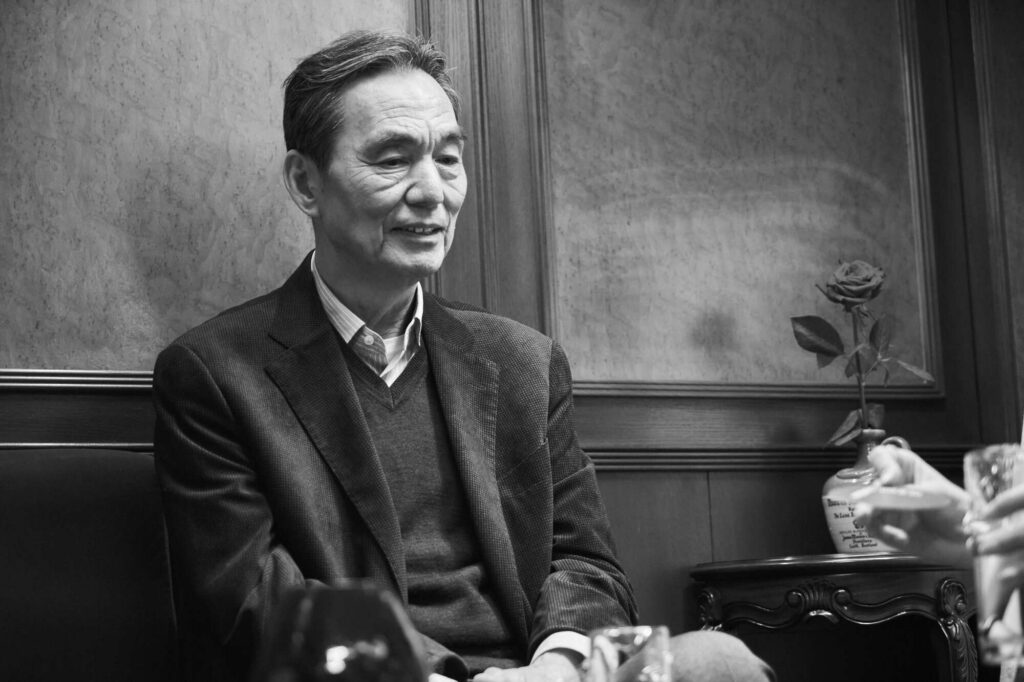
The first half of the story concentrates on Gisuke’s orderly life. He eats, flosses his teeth, uses the bathroom, scrubs himself in the bath after sniffing his armpits. In one scene, he is lying on a doctor’s table after a bad attack of indigestion; he has eaten too much kimchi for dinner. “At your age you can’t gorge on spicy foods and expect no bad effects,” the doctor scolds him. O, the indignity.
And yet, Nagatsuka as Gisuke brings something new to the discussion of life after a certain age. He’s tall and slender, moving with a kind of grace that comes, not from hours spent at the gym but years of cultivating a particular lifestyle. Here’s a man – an elderly, Japanese man, mind you – who does all his own cooking and housework. He goes about in dress shirts and slacks during the day, then changes into pajamas and a bathrobe at night. Instead of watching TV, he reads French novels and frequents a chic bar. Restraint and self-discipline are his watchwords. At all cost, he doesn’t want to be a burden to others. Even more than that, he doesn’t want to appear ridiculous.
In 2024, the average life span for Japanese men was 81.09 years old: shorter than women by about 6 years, but longer by the same 6 years since the 1980s. This means that the average male must have a reasonably hefty amount of savings by the time he retires at age 65 to sustain the 15 or so years before he checks out of existence. Gisuke, who used to be a French literature professor, was forced to take early retirement and now he supplements his pension by writing a monthly essay in a travel magazine and giving the occasional lecture. It’s not enough, especially since the fees for a dating app totals to 120,000 yen a month.
But Gisuke takes all that in stride. Probably because of his French lit background (interestingly, Nagatsuka is a Sorbonne University graduate who studied French theater), Gisuke has a laissez-faire attitude propping up his epicurean lifestyle. He needs that lifestyle in order to be his his dandified, gentlemanly self and cocoon his fragile but sizable ego.
Everyday, Gisuke stares at the numbers in his bank account, calculating just how much longer he can last before running out of money. “I don’t want to live just for the sake of living,” he says to himself. When the cash is gone, he has a grand plan: suicide, after making arrangements for his funeral.
As for relationships, though Gisuke has been a widower for the past two decades, he’s better off than many older men, like his unappealing next door neighbor. He has kept in touch with a handful of former students, now in their late 30s to 40s, who once idolized him and are now happy to take the time to see him over coffee or drinks.
Yasuko (Kumi Takiuchi), whom he secretly lusted after when she was his student, now comes to see him at his home two or three times a year. They share a meal, open a bottle of wine and reminisce about the old days. In one scene, she falls asleep on his sofa and wakes up in time to get to the station and catch the last train. Gisuke can’t bring himself to ask whether she wants to stay the night. If she had said yes (as he fantasizes later), he would have melted with happiness.
Teki is based on the 1998 novel of the same title by Yasutaka Tsutsui. Tsutsui is one of Japan’s most influential novelists of the late 20th century, a pop culture giant with a penchant for the sublime and academic. At 90 years old, he’s still writing while residing in a care facility. These days he limits himself to essays and memoirs. Earlier this year, Tsutsui was interviewed by Yomiuri Shimbun and was full of praise about the adaptation, adding that he advised Yoshida to portray Gisuke as an older man prone to “dreams and hallucinations” instead of a geriatric with dementia.
Accordingly, dreams and hallucinations are what come to define both Gisuke and the film. In the beginning, Gisuke seems to be in total control of his existence and then gradually, almost imperceptibly, we witness his mind fraying at the edges. In his nighttime dreams, his dead wife Nobuko (Asuka Kurosawa) rebukes him about the fact that he had never taken her to Paris. Before long, she appears in the house in the daytime, telling him that he must never remarry and that she knows of his lust for Yasuko. In the next scene, Yasuko is with him in the house., and they have a meal of lamb with bearnaise sauce, which is a dish from Marcel Proust’s In Search of Lost Time. Gisuke made this from a recipe he found on the Internet, because a young hostess at the bar he goes to, told him she liked Proust.
Did Yasuko really come to the house, or was that a fantasy playing out in his head? Did he ever have that conversation with the hostess? He must have, because he offers to pay for her college tuition and after that, his bank statement shows he has just 6,505 yen left in his account.
But as Gisuke says in one of his dreams, “This is all a fantasy, and it’s okay because I’m not being a burden to anyone in the real world.” It’s a touching sentiment and aptly, the story is ultimately kind to Gisuke, shielding him from the usual, humiliating incidents of old age. Gisuke exits the world with dignity and full of kind thoughts for others, which is probably the best end any of us could hope for.
90 Million Yen Settlement for “Women’s Trouble” continues with Nakai Masahiro Losing His Shows 19 Jan 1:22 AM (2 months ago)
By Tori H. Tale
In the December 19th edition of Josei Seven, it was reported that 90 million yen was paid by Nakai Masahiro in a settlement awarded to a woman in connection with the notorious and ambiguous event known as “women’s trouble.”
The incident began in 2023, when Nakai, the woman, and a third person—a TV Fuji executive—were scheduled to attend a dinner party. However, at the last minute, the third person backed out, leaving only Nakai and the woman. What transpired next is what Japanese newspapers have referred to as “women’s trouble,” an event that many speculate was a case of rape. Although these allegations remain speculative, the unprecedented sum of 90 million yen awarded to the victim suggests a massive cover-up of something significant. According to Shukan Bunshun, the victim, described as being in her 20s and part of the entertainment industry, said, “I have not forgiven either the perpetrator or Fuji TV, and of course, I am angry.” This comment implies that the victim may partly blame Fuji TV for its role in the cover-up.
Nakai Masahiro is one of Japan’s most well-known public figures, having been the leader of one of Asia’s biggest idol groups, SMAP. His record is immaculate. Chosen to lead the group in 1988 at the age of 14, Nakai—often affectionately called “Nakai-kun” by his fans—has been a beloved figure for almost an entire lifetime. Tragically, his agency was Johnny & Associates, founded by Johnny Kitagawa, one of Asia’s most infamous predators, who allegedly preyed on young boys for decades without facing repercussions, owing to his immense power in the entertainment industry.
According to Josei Seven, a TV Fuji executive commented, “Since a settlement has been reached between the two parties, the issue is considered ‘resolved,’ and at present, there has been no discussion of ending the program or taking any other actions beyond what is being discussed at Fuji TV.”
While the settlement may have been an attempt to silence the story, it was Sponichi Annex, a sports magazine, that first reported the `trouble` as rape. “Women’s trouble” could be a euphemism for something as trivial as a domestic spat or a cheating accusation, but the 90 million yen settlement suggests something much more serious. In Japan, this kind of settlement money is crazy, and in cases like this, it may be about as close to prison as wealthy, high-profile individuals get when they are accused of rape.
Even when women come forward publicly—like Ito Shiori, who received only the equivalent of 30,000 USD after her assault—media and police response she accused them of diminishing the severity of her crime. Nakai’s case is an example of this: the allegations are dismissed as “women’s trouble,” a vague term that obscures clarity on the seriousness of the situation and fosters doubt about the nature of an alleged crime. With a clean track record and a massive fanbase, any allegation against him won`t be taken lightly. It’s the last thing anyone expected.
But if it wasn’t Nakai-kun and it was anyone of high importance, would it only take 90 million yen to get away with rape? Why was Nakai’s case deemed worth 90 million yen? Nakai has been losing shows only after the settlement leak. How much did these stations know before, and whose reputation, really, was the 90 million yen meant to protect?
Moto Fuyuki, an actor and entertainer commented on the situation saying “Masahiro Nakai is an indispensable person in this entertainment industry, so I hope this problem will be resolved soon.”
Nakai made an official statement on his website on January 9th addressing the controversy saying “There was no involvement of parties other than those concerned in this case.” and “In relation to this trouble, there was no violence, such as by raising my hand as reported by some media.” while also stating “This dispute is all due to my inadequacies.”
It is clear from his statement he is eager to get back to work when he said, “With the settlement reached, I am able to continue my entertainment activities without issue going forward.” However it’s unclear if things will completely blow over for him as one show suggested that his time was over. TV Asahi Corp announced the same day as Nakai’s statement they would suspend his show indefinitely.
The fact that Nakai said there was no violence is concerning if the parameters of the “trouble” were sexual assault. If this was sexual assault, which is highly likely, this raises concerning questions about the parameters of consent and if rape is considered a violent act in Japan. There may never be a time in which the word rape or sexual assault are most assuredly used regarding this situation but it can be left up to anyone’s common sense.
The following is a translated transcript of Nakai’s entire apology:
I am very sorry for causing trouble to everyone.
Some of the information reported by the media is not true, and I am very sorry to the other party and all those concerned.
I was refraining from sending out a message due to confidentiality obligations associated with the settlement with the other party.
As I have caused others pain in many ways in my own activities, I would like to explain to the extent possible.
It is true that I had gotten into trouble.
It is also true that the matter has been resolved following a settlement through attorneys for both parties.
Over the course of the settlement, I sincerely faced up to proposals made by the other party and responded to them.
In relation to this trouble, there was no violence, such as by raising my hand as reported by some media.
With the settlement reached, I am able to continue my entertainment activities without issue going forward.
There was no involvement of parties other than those concerned in this case.
Here are my closing words.
This dispute is all due to my inadequacies.
The other party is involved in this case.
I respectfully request that you refrain from prying into the matter based on conjectures or making slanderous statements regarding this matter.
I extend my deepest apologies to all of you.
I am truly sorry.
Jan. 9, 2025
Masahiro Nakai, Nonbiri Nakai
TBS and TV Asahi have removed at least 2 upcoming shows with Nakai including shows that have Nakai`s name in the title (To Masahiro Nakai’s Friday Smiles). Despite the noticeable absences of Nakai TV news stations aren’t saying much. According to Nikkan Sports, a TBS public relations officer said, “We will refrain from answering as this is a matter related to contracts with individual companies.”
TV Fuji has not commented on inquiries regarding the situation.
(Editor’s note January 27, 2025: Nakai has announced his retirement from the entertainment industry since the original date of publication. Fuji TV has also lost over half of their sponsors since the start of the scandal.)
Sources
1【スクープ】中居正広が女性との間に重大トラブル、巨額の解決金を支払う 重病から復帰後の会食で深刻な問題が発生|NEWSポストセブン
[Scoop] Nakai Masahiro has serious trouble with a woman and will pay a huge settlement. Serious problems arose during a dinner party after his return from a serious illness.
2024.12.20 19:00 Josei Seven
2 中居正広9000万円SEXスキャンダルの全貌 X子さんは取材に「今でも許せない」と… | 週刊文春 電子版
The full story of Masahiro Nakai’s 90 million yen sex scandal: Ms. X says in an interview, “I still can’t forgive him”…
Weekly Bunshun editorial department
3 中居正広「9000万円女性トラブル」代理人が「週刊文春」に回答「トラブルは事実」「暴力はない」「謝罪を申し入れましたが…」 | 文春オンライン
Masahiro Nakai’s “90 million yen trouble with a woman” – his agent responds to “Weekly Bunshun”: “The trouble is true,” “There was no violence,” “I offered to apologize, but…”
4 中居正広 高額示談金トラブル 女性側、当初から性被害主張― スポニチ Sponichi Annex 芸能
Masahiro Nakai: High settlement amount trouble; woman claims sexual assault from the start
[ December 26, 2024 04:45 ] Sponichi Annex Reporting Team
5 Softbank pitchman Masahiro Nakai embroiled in ‘woman problem’
By Mieko Shimizu on December 28, 2024
6Nakai Masahiro embroiled in scandal – Neo-Tokyo 2099
January 3, 2025
7 SMAP’s Nakai Masahiro Disappears from Japanese TV as Scandal Grows – Unseen Japan
January 4, 2025
Jay Allen
8. 中居正広MC「仰天ニュース」7日特番「放送に関しては適切な対応を致します」と日テレがコメント – 芸能 : 日刊スポーツ
Masahiro Nakai MC “Astonishing News” special program on the 7th, “We will take appropriate action regarding the broadcast,” Nippon Television commented
January 7, 2025 5:00 AM
9 「いい印象しかない」中居正広の女性トラブル報道に大物ベテランタレント(72)がブログで吐露…「早くスッキリして欲しい」と真相解明訴え
“I only have good impressions” of Masahiro Nakai (72) in a blog post about the reports of his troubles with women… “I want him to clear it up quickly” – appealing for the truth to be revealed
1/7(Tue) 11:00
January 10, 2025 (Mainichi Japan)
Emperor Nabetsune Has Passed Away: The Yomiuri Shogun is gone 27 Dec 2024 10:59 AM (3 months ago)
by Robert Whiting
I read with sadness of the passing of Tsuneo Watnabe, the long time shogun of the Yomiuri group, which publishes the Yomiuri Shinbun–(editor note: and also owns the Yomiuri Giants baseball team, Yomiuriland–an amusement park and more) . He died recently at the age of 98 after a bout with pneumonia.
He was so powerful I didn’t think he would ever actually die.
Under Watanabe’s leadership, the Yomiuri Shinbun became the largest newspaper in the world with a daily circulation 12 million for its morning edition.
Watanabe was known for his close ties with political leaders, including many in the ruling Liberal Democratic Party (LDP), especially Yasuhiro Nakasone. His editorial direction often supported conservative policies and advocated for constitutional revision, particularly revising Japan’s pacifist Article 9.
He also became the “owner” of the Yomiuri Giants, a post he was unqualified for, as he did not particularly like baseball and did not even understand the rules. During his regime at the top, he conspired with Seibu Lions owner Yoshiaki Tsutsumi, in an ill-advised plan to contract the 12 NPB teams of the Central and Pacific league into one 8 team league, starting with a plan to combine the Kintestu Buffaloes and the Orix Blue Wave into one team, the Orix Buffaloes . This led to the only player strike in the history of professional baseball, lasting all of two days, which effectively canceled the plan to contract and effected the creation of a new team, the Rakuten Golden Eagles to restore the 12 team balance.
I knew Tsuneo Watanabe fairly well. In 1968, while I was a student at Tokyo’s Sophia University, a professor named Kan Ori who was teaching a class I attended in Japanese politics, approached me about teaching English to his friend Watanabe, who at the time was one of Japan’s top reporters and who was being assigned to take over the Washington DC Yomiuri Shinbun Bureau.
As I understood the situation, the Yomiuri Shinbun wanted to buy some land and put up a new building in Ohtemachi. The government agreed to cooperate only on the condition that Watanabe—who had greatly irked the Sato Eisaku cabinet with constant criticisms in his newspaper columns—be sent out of the country, hence the DC appointment.
I accepted and for the next year I went to Watanabe’s apartment in San Ban Cho for three times a week.
We would retreat to Watnabe’s den, seated on tatami at a low table, surrounded by stacks of books on government and politics around the world. He would drink tea and talk about affairs of the day in English, which he was in fact, quite good at. Occasionally we would be joined by his friend Sam Jameson, the famed correspondent for the Chicago Tribune and later the Los Angeles Times, It was there that I also Yasuhiro Nakasone and a Mr. Kobayashi who was Nakasone’s secretary general. They were all regular members of Mr. Watanabe’s benkyo-kai, a weekly study group, that Watanabe had organized for his political associates, to discuss politics and play mah-jongg.
Watanabe was not a typical Japanese conservative. The son of a banker Tokyo who died prematurely from stomach cancer, Watnabe grew up in comfortable circumstances and, as a junior high school student, openly opposed the army and teachers who promoted militarism. In high school, he was called to work in a factory making airplanes which he resisted by making defective parts. Drafted by the Japanese Imperial Army in 1945 during the last stages of the war, as a lowly private, he suffered physical abuse at the hands of his superiors.
It was during that time that the military began dispatching kamikaze pilots, whom the Japanese right wing went on to glorify as willing martyrs for the emperor.
“It’s all a lie that they left filled with braveness and joy, crying, ‘Long live the emperor!’ ” Watanabe would tell me, with anger in his voice,. “They were sheep at a slaughterhouse. Everybody was looking down and tottering. Some were unable to stand up and were carried and pushed into the plane by maintenance soldiers.” (NY Times)
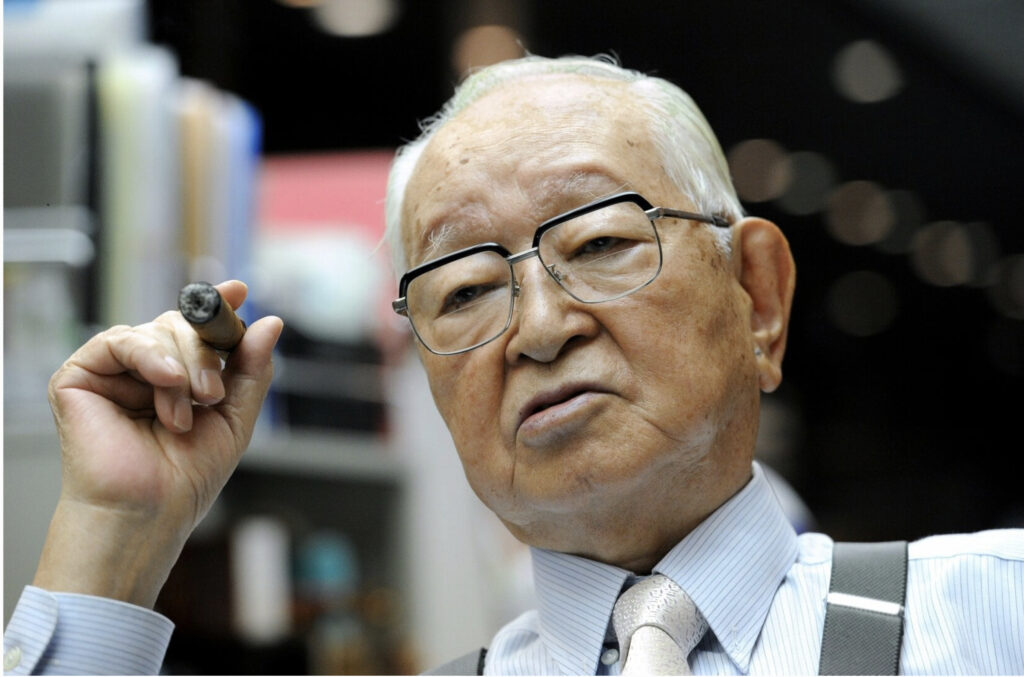
Tsuneo Watanabe was the Rupert Murdoch of Japan, ruling over the Yomiuri Shimbun Empire for decades.
He told me that he had hated the militarism of Japan with every fiber of his being.
After the war, in September 1945, he entered Tokyo University, he had applied for membership in the Youth Communist Federation. He distributed pamphlets, fliers and encouraged people to attend the lectures. By 1947, he was acknowledged as a regular member of the Communist party. He belonged to one of the cells in the university and delivered speeches in other universities which resulted in increasing party members.
But he came to find the movement too dogmatic and in December 1947, he submitted his resignation from the JCP. Others say he was booted out for criticizing the movement.
After graduation, he joined the Yomiuri Shimbun where by the end of the 1950’s he had become the paper’s leading reporter and by then had become conservative in his leaning. He was captain of the Kisha Club reporting on Ono Bamboku a leading conservative in the newly formed Liberal Democratic Party and developed a close relationship with Yasuhiro Nakasone, a up-and-coming politician (and future prime minister of Japan), whom many Japanese were comparing to a JFK—young, healthy, vigorous, and dressed in tailored suits with designer silk ties.
Watanabe was gruff, blunt. He wore his politics on his sleeve. He absolutely hated the Emperor and the Imperial system, which, of course, was an amalgam of state and religion. In particular, he blamed the Emperor for allowing the war to happen and he told me he thought the Imperial Palace should be torn down, the grounds paved over and turned into a parking lot.
He was an outspoken opponent of Yasukuni Shrine and thought Shinto was a mumbo-jumbo religions.
I did my best to help Watanabe-san improve his English. As it turned out, however, I was the one who got the education.
It was from Watanabe that I first learned how corrupt politics in Japan was. It was all about money, starting with Prime Minister and LDP Party Boss Eisaku Sato.
“Japanese politics is dirty,” he liked to say “It’s all about money. Not policy. Only money. “
Watanabe absolutely despised Eisaku Sato, the elephant-eared, prime minister of Japan at the time. Sato, son of a samurai turned sake brewer, was the younger brother of the aforementioned Nobosuke Kishi, the American puppet and CIA favorite. Watanabe thought he was corrupt to the core and indeed the PM’s tenure at the top was engulfed in a string of corruption scandals that earned the nickname the Black Mist. Among them, bribes paid by the Kyowa sugar company to LDP politicians for help in obtaining $20 million in loans, Sato’s Transportation Minister arranging for an express train to stop at his local home town station, and LDP Dietman extorting businessmen for money, the head of the Self-Defense Force using YS-11 for private use, the speaker of the Lower House dealing in fraudulent bank drafts (“tegata”) (all in 1966)
Watanabe described in detail how he thought Sato obtained won the post of Prime Minister. In 1964 former Prime Minister Hayato Ikeda, suffering from throat cancer, was compelled to resign his post because of failing health. It was decided by party officials that rather than endure a difficult intra-party battle between the leading factions over his successors that it would be better for Ikeda to chose the next party president who would automatically become PM, in Japan’s parliamentary system. The logical choice was Ichiro Kono, the man who had organized the 1964 Tokyo Olympics and who was close to Ikeda. Ikeda, who was unable to speak because of his illness, wrote down the name of his successor, Kono, on a piece of paper, folded it and handed it to an aide.
“Somewhere along the line,” said Watanabe, “the paper was intercepted, made to disappear, a large amount of money changed hands, and a new piece of paper appeared with Sato’s name on it.”
For a naïve 24 year old, that was quite a revelation.
Corruption in the Sato regimen was a frequent target of Watanabe’s columns and he told me that Sato’s wife had visited his wife with a gift—an envelope full of money—a not so subtle hint that she might suggest to her husband to ease off on his attacks on the PM’s office. Watanabe’s wife, a former actress and model, refused.
“Sato should commit hara-kiri” said Watanabe with contempt in his voice.
In November 1966, Sato went on television and told a nationwide audience: “It is regrettable that my administration and party have invited public distrust for lack of moral standards. The main thing is that I, as the responsible person, fully grasp the implications.” On the theory that he could best correct the situation, Sato thereupon announced his candidacy for a second term as party president. (TIME, Nov. 4) No one doubted that he would win, as he in fact did in the December election.
I introduced Watanabe to friends in Washington DC, who helped him settle in and I saw Watanabe periodically over the years. He ran a nice interview and story about me in his newspaper for my first book The Chrysanthemum and the Bat, which helped make it a best seller..
But I relationship went south in 1990 when I wrote a column in the Shukan Asahi exposing the Yomiuri Giants false attendance reports at their new stadium the Tokyo Dome.. The Giants reported a capacity crowd of 56,000 for every home game at the Tokyo Dome. But I counted the seats—42,761 and the standing crowd 3,600—and also discovered a sign on the B3 Level of the Dome parking area posted by the Tokyo Fire Department which read 46,134.
According to Sam Jameson, Watanabe was very angry about that story and told him “I’ll never forgive that son-of-a bitch Bob Whiting for writing that to the Asahi.”
Said Sam, “It was the disloyalty that bothered him.”
So much for truth and objectivtity in reporting.
Tsuneo Watanabe RIP.
Note: This column was cross-posted from Robert Whiting’s Substack with his permission. If you want to know about the history of post-war Japan and get a deeper look at current events, definitely subscribe.
Is there space on shelves for foreign authors? Book industry professionals give tentative encouragement 26 Dec 2024 12:48 AM (3 months ago)
Japan is the second largest market for publishing books in the world — a fact that probably comes as no surprise to people living in Japan who only need to throw a stone to hit a bookshop.
Foreign authors looking to publish in Japan may look at this and think they have a great chance of making their way into the literary scene. If they’re writing in English, they aren’t entirely wrong — 80% of translated books in Japan are translated from English.
That being said, the number of newly published books in Japan is decreasing every year, and the literary scene is extremely competitive. Publishers are prioritizing domestic literature rather than taking the risk of new, untested literature in translation. Only a sliver of newly published books in Japan are in translation — 5.7 percent.
According to the publishers at Kadokawa, one of the largest publishing houses in Japan, the best strategy for foreign aspiring authors is to try their hand at non-fiction.
Back in the day, foreign perspectives on Japanese culture were rare and the novelty rendered them near-certain bestsellers. These days, the captive audience isn’t what it used to be, but Japanese readers have yet to fully move on from the foreigner’s take on Japan. They’re just a bit more picky.
Satoshi Gunji, a former supervisor at Kadokawa, says that Japanese readers appreciate rediscovering their culture through foreign perspectives. Aspects of food culture have been particularly successful in recent years. Fermentation, for example, is a process that is both trending in the west and a staple process in many cuisines including Japan. Authors can come from many backgrounds and approach Japanese fermentation culture from many fresh perspectives. Onigiri is another unexpectedly popular topic in recent years for its simplicity and versatility.
Japanese-American author Roland Kelts noted that many of the aspiring authors, or “gaijin geeks” as he calls them (not without some wry affection) lack the crucial element that makes books in the “outside-looking-in” genre compelling—personal connection beyond consumption. To succeed, or to be picked up by a publisher in the first place, the best thing to do is to find a genuine niche to write in.
Author Robert Whiting is a clear example of this. On his 13th publishing bid, he was finally able to see his first book in print in 1977. The Chrysanthemum and The Bat is a book about baseball’s popularity in Japan and proved to be a hit in the United States — the Americans, it seems, were curious about its most famous export in Japan as well. Following its success, Japanese publishers took it on as a translation project, and the rest is a nearly 50 year long history of Whiting’s career in Japan.
Whiting was blessed with good timing, certainly, by being able to tap into the market at a time when there were relatively few foreign authors in Japan. But the success of the book in both America and Japan led to Whiting being able to pursue a career in writing not only books but also consistent paid work as a sports writer for newspapers and magazines. Through the connections and reputation developed through these columns and interviews, he was able to reach sources that other writers weren’t able to access—Japanese or foreign. Whiting became a foreign authority on baseball in Japan, and later, on foreign relations between the two countries.
It was after tens of books in both English and Japanese that he published his memoir Tokyo Junkie, as well as his arguably most well known book Tokyo Underworld, a biography and true crime reportage about an American gangster in Japan.
Whiting credits his success to sticking to nonfiction, echoing the remarks of the Kadokawa publishers, as well as the merits of writing in volume. “To be good at something, you gotta put in ten thousand hours — I put in my ten thousand hours,” he remarked.
Can foreign authors find success in Japan? It depends on the kind of success they’re looking for. If it’s being a one-off, Japan-only runaway hit, that might be difficult.
Miko Yamanouchi, also of Kadokawa, suggests having a clear strategy. If they want to write in Japan no matter what, a work of nonfiction with a clear and unique perspective on Japanese culture would be the most sensible. However, if being widely published globally is the goal, the author could try for any genre. Literature today is trending toward romantasy and feel-good novels: do with that information as you will.
Whiting’s advice is less business-informed and as such perhaps more appealing to aspiring authors. He suggests writing and publishing books without any expectation of making much money from it. Instead, he emphasized being open to the possibility of coming into work by virtue of being a published author with some authority on a topic. That might be the most practical shot at making a living through writing.
But who knows? Maybe you’ll beat the odds on your own terms—and just be that breakout hit.
Japanese Spies, Hollywood Stars and Pearl Harbor 16 Dec 2024 6:39 PM (3 months ago)
By Ronald Drabkin
It’s been a long and unexpected journey—from the moment I discovered my father had been a spy, to seeing my nonfiction book, Rutland, Omae wa Dare Da, prominently displayed in the history section of Kinokuniya and other major Japanese bookstores. (The English version, published by HarperCollins, is called Beverly Hills Spy.)
The hero and villain of the story is one English war hero named Frederick Rutland. Born a son of a poverty-stricken day laborer in Victorian England, the odds of success were stacked against him. Yet, in World War I, he became famous as he flew a rickety plane from a ship on a mission over the German fleet during the Battle of Jutland. Later, discriminated against due to his low-class birth, Rutland accepted an offer to work for the Imperial Japanese Navy. Out of sight from other westerners in a large villa in Zaimokuza, Kamakura—just down the street from the future Admiral Yamamoto—he helped modify and update the Japanese aircraft carriers Akagi and Kaga, the lead ships in the Pearl Harbor attack. Then, he redesigned parts of the Mitsubishi planes to enable safe landing on those carriers.

The Japanese naval officers were impressed with Rutland and decided that this Englishman would be a terrific spy. In a move that surprised him as much as anyone, they moved him and his family to Hollywood. Hanging out with friends such as Boris Karloff and the Japanophile Charlie Chaplin, he stole significant technical and strategic information that helped the Japanese Navy execute their attack on Hawaii.
I never imagined I’d write a book—not with my shaky college English record and a career in tech that had nothing to do with history. But somehow, everything fell into place in the most unexpected way.
It all began after my father passed away in 2017. He had occasionally dropped hints about his time in espionage, mentioning that he’d been involved in “rounding up communists in Los Angeles.” However, he always stopped short of sharing any real details, leaving me intrigued but in the dark.

Curious about my dad’s shadowy past, I began digging into the world of espionage in Los Angeles. A few online searches eventually led me to file Freedom of Information Act (FOIA) requests with the FBI. For anyone curious, filing a FOIA request is straightforward—you can do it right on the FBI’s website. The FBI archivists were remarkably helpful in my search. If there’s any declassified information on the person you’re researching, they’ll send it to you.
As luck would have it, my timing was perfect. The FBI responded with recently declassified documents. While the files didn’t mention my family, they uncovered a gripping and little-known narrative: a clandestine network of Japanese spies and Hollywood stars, all coordinated by a rogue British pilot, Frederick Rutland.
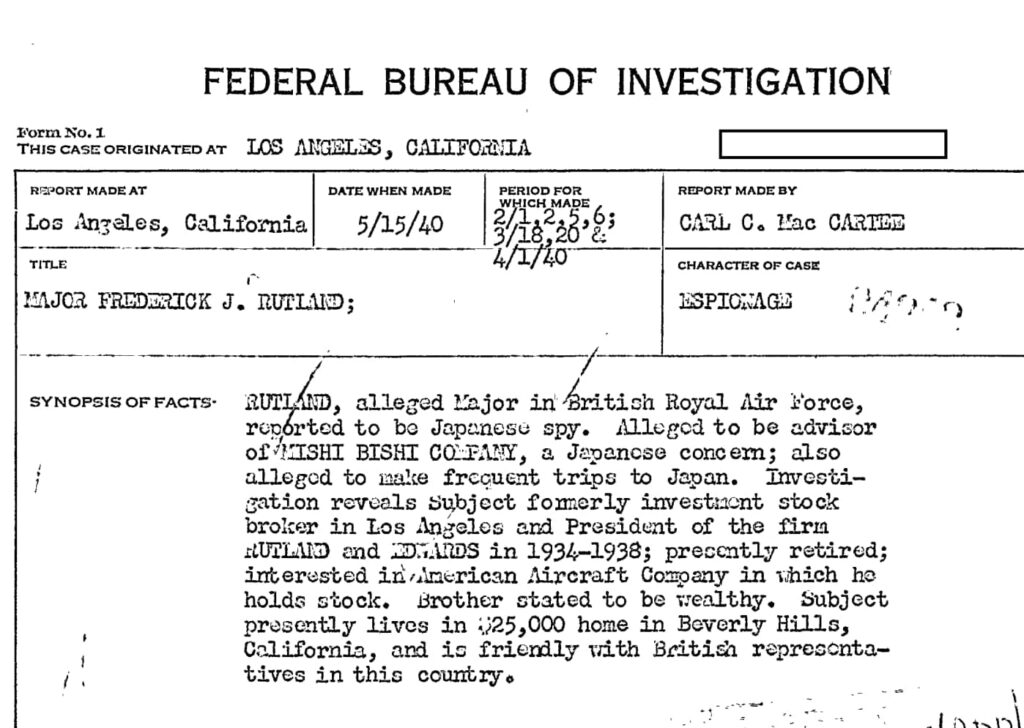
The FBI files offered only the American perspective on Japanese espionage. To complete the picture, I turned to friends who serve as active-duty officers in the Japanese Maritime Self-Defense Force. Their passion for Imperial Japanese Navy history and their expertise were invaluable, helping me uncover details from the Japanese side of the story that I would never have found myself.
Official records from Japan’s Naval Intelligence in the prewar period were burned around the time of Japan’s surrender, with smoke rising over Hiyoshi, on the location of Keio University’s campus today. However, many of the Japanese Navy’s spymasters went on to write detailed memoirs after the war. These firsthand accounts offer vivid insights into the activities of Japanese spies, shedding light on their covert missions in Hollywood and other parts of the United States.
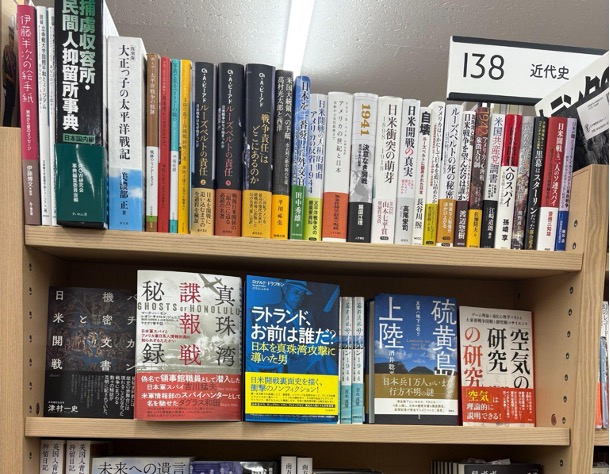
Returning to the story of my father, the spy: he worked for U.S. military counterintelligence in Los Angeles shortly after World War II. At the time, his unit was part of the U.S. Army, but has since become part of the FBI.
Much of his unit’s work focused on uncovering Soviet spies targeting aircraft manufacturers like Lockheed and Douglas. Lockheed, then as now, was a leader in developing America’s most advanced warplanes. During the 1950s, the Soviets were relentless in their attempts to steal information on the cutting-edge technology being developed there.
Before World War II, the Japanese Navy had mounted similar operations with the same goal: acquiring advanced American aircraft technology from Lockheed and other manufacturers. And, as history shows, they succeeded.
One of the primary objectives of prewar Japanese spies was to figure out how to make their planes fly farther on a single tank of fuel. With the vast distances of the Pacific Ocean, long-range capabilities were essential for any successful military campaign. Lockheed, at the time, was arguably the leader in developing aircraft with exceptional range—most famously exemplified by the plane they built for Amelia Earhart. Stolen information from Lockheed is believed to have played a significant role in the design of Japanese warplanes like the Mitsubishi Zero, which was renowned for its incredible range.
Lockheed and the FBI were well aware of the potential for espionage and kept a close watch for suspected Japanese agents attempting to infiltrate their operations. However, they were looking in the wrong places. As it turned out, no Japanese spies were found working inside the Lockheed plant. Instead, the source of the leaks was a surprising duo: Frederick Rutland, the celebrated British pilot, and his unlikely accomplice—an Irish night janitor. Even more astonishing were the janitor’s Hollywood connections: he had previously done odd jobs for Boris Karloff and Douglas Fairbanks’ brother, even using their names as references.

I’m thrilled that my book is now available in Japanese, and I can’t help but wonder how the Japanese reading public will respond to it. If I have one lingering regret, it’s that despite all my research, I never found any FBI or government records detailing what my father actually did during his time in intelligence.
Perhaps one day, if such files exist, they too will be declassified—and I’ll finally uncover the full story of my father’s mysterious past.